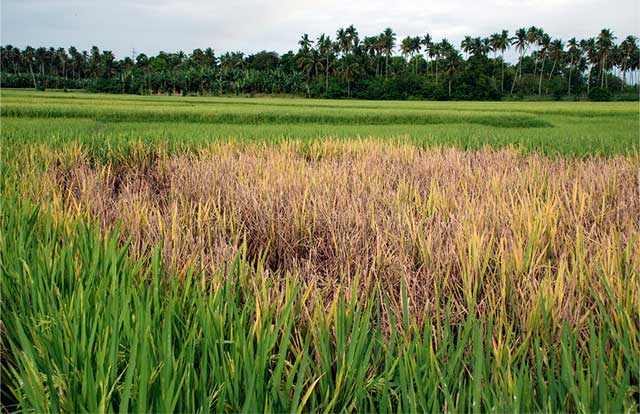How to manage pests and diseases
 Farmers lose an estimated average of 37% of their rice crop to pests and diseases every year. In addition to good crop management, timely and accurate diagnosis can significantly reduce losses. If you are facing a problem in your crop and need help with diagnosis, seek advice from a professional or use the Rice Doctor.
Farmers lose an estimated average of 37% of their rice crop to pests and diseases every year. In addition to good crop management, timely and accurate diagnosis can significantly reduce losses. If you are facing a problem in your crop and need help with diagnosis, seek advice from a professional or use the Rice Doctor.
Crop problems can be caused by other living organisms, like rats and fungus, or by non-living factors, such as wind, water, temperature, radiation, and soil acidity.
The best control for pests and disease problems is prevention. To limit pest and disease damage:

















